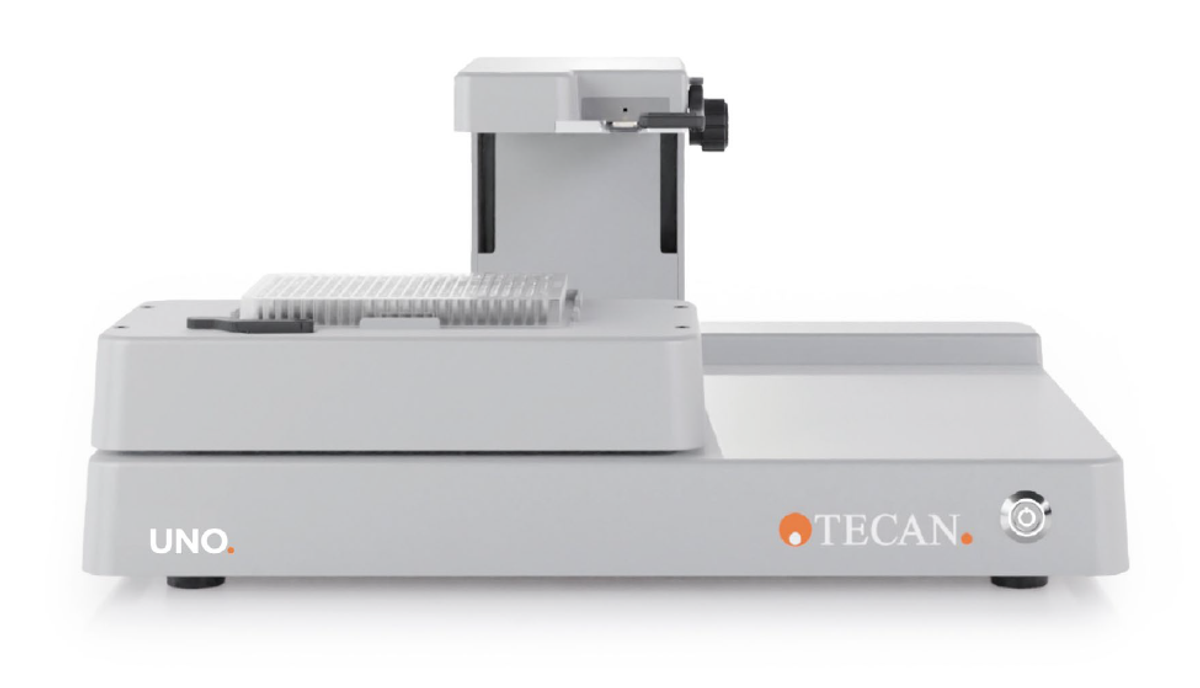Technology Highlight| Article
Microfluidic digital dispensing technology can gently isolate viable and healthy cells suitable for a range of downstream applications.
Cellular heterogeneity drives many physiological and pathological responses, but conventional analysis methods that sample only in the aggregate can mask signal from rare cell types.1,2 Achieving single cell resolution has revolutionized scientists’ understanding of cellular behavior, function, and characterization, helping them advance in many fields.2 However, isolating and separating individual cells for downstream single cell applications can be technically challenging.

The Uno Single Cell Dispenser is a benchtop device designed to lower barriers to entry for scientists looking to access single cell resolution.
Tecan
Numerous techniques for single cell separation, isolation, and sorting exist, ranging from manual manipulations to high-throughput instruments capable of processing tens of thousands of cells. In all of these, the primary considerations are yield, quality, purity, throughput, and accessibility.2 Techniques that rely on manual manipulation, such as limiting dilution, do not require sophisticated instruments, but are inefficient and less accurate. Conversely, fluorescence activated cell sorting (FACS) offers high throughputs, but requires complex instrumentation, can be difficult to master, and applies significant mechanical force upon the cells.2
Microfluidics offers a potential third option to this dichotomy. Microfluidic devices separate cells by passing cellular suspensions through microchannels into distinct chambers, thereby providing throughput and accuracy without exerting mechanical stress upon cells.2 While earlier microfluidic devices were complex and highly specialized, newer models are designed with lowering barriers to entry in mind.3 Instruments like the benchtop Uno Single Cell Dispenser™ focus on lower costs, smaller footprints, and greater user-friendliness. None of this comes at the expense of functionality. For example, the Uno can provide 384-well throughput in five minutes with picoliter-level accuracy.4 Microfluidic digital dispensing technology can gently isolate viable and healthy cells suitable for a range of downstream applications including mass spectrometry-based single cell analysis, stem cell libraries, 3D cell research, and cell line development.
Read more about microfluidic digital dispensing technology here.
References
- Hu P, et al. Front Cell Dev Biol. 2016;4:116.
- Gross A, et al. Int J Mol Sci. 2015;16(8):16897-919.
- Sanchez-Avila X, et al. J Am Soc Mass Spectrom. 2023;34(10):2374-80.
- Uno Single Cell Dispenser™. Tecan Life Sciences. 2023.
